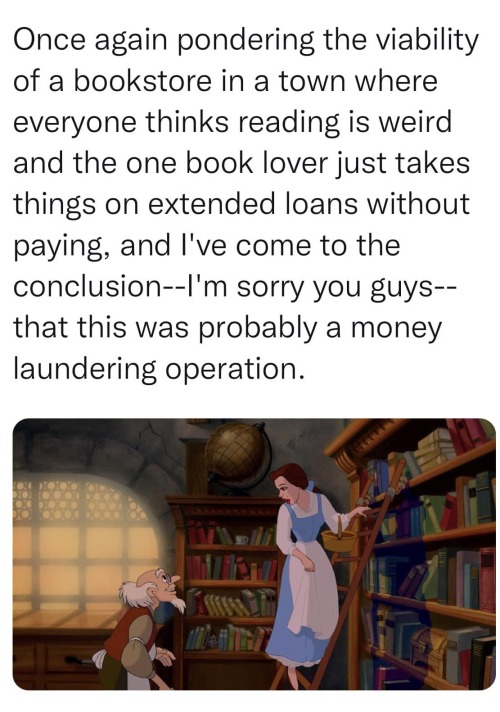While I Kinda Hate To Add A Giant Block Of Text To Phil's Beautiful Explanation, If You Want A More Complex
While I kinda hate to add a giant block of text to Phil's beautiful explanation, if you want a more complex answer, here it is:
This is the box office chart on its opening weekend, new releases in bold:
1. The Expendables, $34 million
2. Eat Pray Love, $22 million
3. The Other Guys, $17 million
4. Inception, $11 million
5. Scott Pilgrim, $10 million
Different films attract different demographics, and a lot of Scott Pilgrim's were sucked away by its competition. Scott Pilgrim is a wacky, video game- and comic-book inspired romantic action comedy full of wild visual tricks, starring Michael Cera. Strangely, that doesn't appeal to everyone, but a lot of it is down to the other films.
The Expendables sounded like a spectacular idea, what with Stallone, Statham, Schwarzenegger, Willis, etc. in a violent, R-rated romp blessed with exceptional marketing; given the choice, older males flocked to that rather than the sillier, more romantic Scott Pilgram. (If you want the demographics, 61% of the audience was male, 60% over 25) Even if the movie ultimately stopped just short of delivering the goods, it had that first weekend in the bag.
Eat Pray Love was an adaptation of an incredibly popular book starring Julia Roberts, returning to the romantic comedy roots that made her so popular to begin with. In a choice between A) a romantic comedy that centered on a beloved actress, tackled relatable issues like depression and self-worth, and subtly indulged in a lot of fantasies that appeal to older women, and B) a flashy, video-game inspired fantasy about Michael Cera trying to win a girl's heart through fighting and modern indie rock The appeal for older women was naturally to Eat Pray Love. (in fact, 72% of its audience was women, 56% over 35)
As for teenager guys, the primary audience, a lot of them were showing up for the second weekend of the rather funny The Other Guys, which teamed Will Farrel with Mark Wahlberg, or finally catching up to (or watching for the second time) Inception, which was a word-of-mouth smash that, whatever its intellectual merits, was at the least a phenomenal action flick.
Finally, by the third weekend of August, most teen guys are a bit worn out from the deluge of movies targeting them through the summer and busy going back to school anyway; business really dies down around then.
On a cleaner weekend, it might have been an easier sell, but its wild genre-bending just didn't appeal to any individual audience as much as anything else.
And with the summer over, it's really hard for a non-drama release in the middle of August to catch on. There are exceptions (Superbad, Inglourious Basterds, District 9), but they're relatively rare. And with five wide releases on its second weekend, it didn't have much of a chance. For all that, $10 million does still seem a little on the low side, which suggests that the marketing couldn't figure out how to scale the cliffs it was facing.
The last piece of the puzzle is the film's quality - for all its dazzling visuals, originality, and clever comedy, it stops short of really connecting emotionally for most people, and that, more than anything, is what gets word-of-mouth going.
Which, as noted, is just too bad, because not only was it a good flick, but it should have been what launched Edgar Wright into the mainstream.
So why did the Scott Pilgrim movie flop?
Because not enough people bought tickets to see it. Which is sad, as it was pretty good.
More Posts from Jjgaut and Others
I have been thinking a lot about what a cancer diagnosis used to mean. How in the ‘80s and ‘90s, when someone was diagnosed, my parents would gently prepare me for their death. That chemo and radiation and surgery just bought time, and over the age of fifty people would sometimes just. Skip it. For cost reasons, and for quality of life reasons. My grandmother was diagnosed in her early seventies and went directly into hospice for just under a year — palliative care only. And often, after diagnosis people and their families would go away — they’d cash out retirement or sell the house and go live on a beach for six months. Or they’d pay a charlatan all their savings to buy hope. People would get diagnosed, get very sick, leave, and then we’d hear that they died.
And then, at some point, the people who left started coming back.
It was the children first. The March of Dimes and Saint Jude set up programs and my town would do spaghetti fundraisers and raffles and meal trains to support the family and send the child and one parent to a hospital in the city — and the children came home. Their hair grew back. They went back to school. We were all trained to think of them as the angelic lost and they were turning into asshole teens right in front of our eyes. What a miracle, what a gift, how lucky we are that the odds for several children are in our favor!
Adults started leaving for a specific program to treat their specific cancer at a specific hospital or a specific research group. They’d stay in that city for 6-12 months and then they’d come home. We fully expected that they were still dying — or they’d gotten one of the good cancers. What a gift this year is for them, we’d think. How lucky they are to be strong enough to ski and swim and run. And then they didn’t stop — two decades later they haven’t stopped. Not all of them, but most of them.
We bought those extra hours and months and years. We paid for time with our taxes. Scientists found ways for treatment to be less terrible, less poisonous, and a thousand times more effective.
And now, when a friend was diagnosed, the five year survival odds were 95%. My friend is alive, nearly five years later. Those kids who miraculously survived are alive. The adults who beat the odds are still alive. I grew up in a place small enough that you can see the losses. And now, the hospital in my tiny hometown can effectively treat many cancers. Most people don’t have to go away for treatment. They said we could never cure cancer, as it were, but we can cure a lot of cancers. We can diagnose a lot of cancers early enough to treat them with minor interventions. We can prevent a lot of cancers.
We could keep doing that. We could continue to fund research into other heartbreaks — into Long Covid and MCAS and psych meds with fewer side effects and dementia treatments. We could buy months and years, alleviate the suffering of our neighbors. That is what funding health research buys: time and ease.
Anyway, I’m preaching to the choir here. But it is a quiet miracle what’s happened in my lifetime.
Practical F/X vs. CGI in Willow
I finally caught up with the 1988 George Lucas / Ron Howard fantasy yarn Willow, and it's a blast. Not quite a classic, but spectacular, imaginative, thrilling, and charming in a way few blockbusters are.
The highlight for me - besides Val Kilmer's delightful rogue The Mad Martigan - is a battle sequence in a castle, where Martigan is basically taking on a few dozen villains on his own using a variety of tricks and tactics while Willow is busy trying to get his sorcery to work. There's a lot of other elements at play here - the villainous Princess Sorsha trying to figure out if she loves or hates Martigan, sorceress Raziel is stuck in a goat form, and trolls have encased all the inhabitants of the castle into stone and are still lurking around somewhere. It's a terrific scene as it is, but then Willow, trying to ward off a troll, accidentally turns it into a gigantic two-headed dragon known as the Eborsisk. And it's fantastic.
Later on, there's a scene widely praised at the time where Willow turns Raziel from a goat into an ostrich, a turtle, a tiger, and finally her own form in turn. It was the first CGI Morph in film, and led directly to The Abyss, which led to T2, which led to Jurassic Park, until now, when studios spend $250 million to make over-budgeted cartoons with live actors pasted in here and there.
Which got me thinking on the CGI vs. Practical Effects debate, since this is a nice example of the same effect being done both ways. Thinking about it, I think in both cases it was the right call.
The troll-to-dragon transformation is done with a combination of go-motion (an advanced version of stop-motion developed by Phil Tippett for the Hoth battle in The Empire Strikes Back) and animatronics. The effect is choppy and ugly, and the result is unsettling and creepy. It looks wrong, something that should not be.
It also necessitates cutting back to Willow's reaction shot. That's one of the things that makes the scene so good, really - Warwick Davis's look of "What the hell did I just do?" elevates both the horror and humor of the scene.
By contrast, the CGI morphing is smooth and fluid. It's no more or less realistic, but we're talking about magic here, so realism isn't exactly the goal. But this scene isn't Willow accidentally turning one monster into another, much more horrific monster; it's about Raziel becoming her own form again, and about the beauty and wonder of magic. It also allows the scene to take place in longer takes, but we don't especially need Willow's reaction until Raziel is herself.
Reversing the effects wouldn't have worked as well for the story - the smooth transformation would have looked like just a cool effect with the troll-to-dragon rather than horrifying (CGI can do a great many things well, but creepy just is not one of them), and Raziel's wouldn't have had the same sense of wonder and beauty with the grotesque look of go-motion. (The AT-ATs or ED-209 are exactly the sort of thing Go-Motion is good at)
Unfortunately, go-motion has largely gone extinct in the CGI era, as it's thought to be less "realistic", though I'm somewhat unconvinced given how cartoonish the effects look in mega-budget films like Days of Future Past (a phenomenal movie, by the way) or Amazing Spider-Man 2 (not a phenomenal film). Like makeup effects, bladders, models, matte paintings, and even celluloid film itself, go-motion is the older, harder method, but there are stories told better. Sometimes, like King Arthur in Excalibur, storytellers should charge into battle using the Old Ways.
On the other hand, sometimes you want a T-1000 to wreck up the place, and gotta bring in the computers.
Practical and digital are both tools, both with their function and form in stories. I hope going into the future, film makers remember the old methods and use them, and that cynical, f/x savvy viewers remember what beautiful things can be done with the new methods and don't dismiss them out of hand. (myself included)
Now you see, I’ve watched enough cartoons to know that this square of the carpet is on a separate animation cell from the background & therefore something funky will happen if I step on it. You won’t catch me making a rookie mistake like that no sir!


![Hereditary [2018]](https://64.media.tumblr.com/272f70a1bbf4c43590bda42ed2bd6ea5/tumblr_pa4zleyf0I1tbx8d0_og_540.jpg)
My review of the well-made, exceedingly well-acted, but long and profoundly unpleasant Hereditary.
Yeah, "routines" suddenly make way more sense to me, and I totally see what my routine needs have always been.
i think a lot of neurotypicals misunderstand what “routine” means in the context of autistic ppl needing routine. they seem very fixated on the idea that routine means doing the same thing at the same time every day (eg always eating at 12, always showering at 7, idk, stuff like that) and they don’t seem to get that while yes, those are a kind of routine that some autistic ppl need/like, it’s not the only thing.
like for me, for example, it is way more important that the songs i listen to play in the right order and that the right kind of audio is on in the background when i do different tasks than it is that i do said tasks at a specific time of day. the routines that are important to me are about how i do things, not when. but nt ppl don’t understand this.
why is this important? bc i have had So. Many. neurotypicals tell me that the reason i’m depressed/anxious/not feeling well is that i don’t have enough of those when routines in my life. that obviously if i made sure to always shower at the exact same time of day i wouldn’t be depressed. that obviously if i made sure to always get up at exactly the same time, no wiggle room of even a minute, then i wouldn’t be anxious. “because you’re autistic!” they say, “and routines are important for you! you’ve even said so yourself!”
and then they proceed to not take the actual reasons why i’m feeling unwell seriously, because obviously if an autistic person isn’t living minute by minute according to a schedule that dictates their every move then that has to be the cause of all their problems.
Neurotypicals will be like “I know you have a disability that affects your ability to stay organized, manage your time properly, socialize, or control what you’re able to think about or focus on, but that’s not an excuse to have trouble staying organized, managing your time properly, socializing, or controlling what you need to think about or focus on.” And then demand that they aren’t ableist. I’m tired.
There's a movie from the 60s about this called The Agony and the Ecstacy where the terrible pope is played by Rex Harrison and is thus a very charming terrible pope, and Michaelangelo is played by Charlton Heston at his most Hestonian, and is thus a volcanic force of pure passion.
It’s also one of those weird movies from the mid-60s where Hollywood is trying to do offbeat dramas and play them as massive epics, so it's ridiculously colorful and spectacular for a movie about a dude lying on his back for years with a paintbrush yelling at the pope to get out of his business.
It’s fun.

do you ever think about how little Michelangelo cared

I know it’s not hard to point out reactionaries hypocrisy when it comes to like safe spaces or hug boxes or whatever but genuinely how much of an echo chamber do you have to exist in for you to think this is a reasonable thing to say


Giveaway Contest: We recently reached 50,000 followers, and as a way of thanking you, we’re giving away FIFTY (50!) vintage paperback classics by Albert Camus, John Steinbeck, Carson McCullers, Toni Morrison, George Orwell, Ray Bradbury, Jane Austen, and so many others! Won’t these look lovely on your shelf? :D To win these classics, you must: 1) be following macrolit on Tumblr (yes, we will check. :P), and 2) reblog this post. We will choose a random winner on January 20, at which time we’ll start a new giveaway. And yes, we’ll ship to any country. Easy, right? Good luck!
-
 giantpredatorymollusk liked this · 10 years ago
giantpredatorymollusk liked this · 10 years ago -
 deathchrist2000 reblogged this · 10 years ago
deathchrist2000 reblogged this · 10 years ago -
 pikafwance liked this · 10 years ago
pikafwance liked this · 10 years ago -
 freznosravingrants reblogged this · 10 years ago
freznosravingrants reblogged this · 10 years ago -
 froborr reblogged this · 10 years ago
froborr reblogged this · 10 years ago -
 jjgaut reblogged this · 10 years ago
jjgaut reblogged this · 10 years ago -
 flynnspeaks liked this · 10 years ago
flynnspeaks liked this · 10 years ago -
 evilsoup reblogged this · 10 years ago
evilsoup reblogged this · 10 years ago -
 deathchrist2000 liked this · 10 years ago
deathchrist2000 liked this · 10 years ago -
 eruditorumpress reblogged this · 10 years ago
eruditorumpress reblogged this · 10 years ago